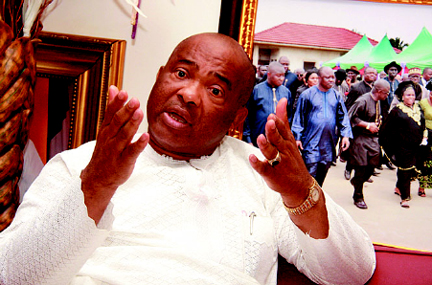Dangerous, growing, yet unnoticed: the rise of America’s white gangs
White gangs are less covered by the media, and less punished – even though 53% of gang members in Mississippi are white
It was 1989, the height of the crack era, and many white kids wanted to join black gangs that did not welcome them, so they initiated each other into home-grown copycat versions.
Ivey lived in a trailer park, and the thought of wearing the gang’s colors – black and blue – made him excited to be part of something beyond his chaotic family.
None of them knew the first thing about being in a gang, and yet many kids lusted after it, even some who “lived in nice homes with their families”, Ivey says now. Others grew up like he did: the child of poor crack and opioid addicts, ripe to be ensnared by a world promising brotherhood, loyalty and respect.
Ivey’s future was not in a black organization, however – it was in one of the oldest and largest white gangs in the US, the Simon City Royals.
“A lot of us were raised in the pits, and that’s where almost all gang life begins,” he says.
Ivey, now 41, is muscular and likes to keep fit, even though he only weighs 160 pounds. He sports a buzz cut and has tattoos over much of his body. He proudly calls himself a “redneck”.
Gesticulating passionately during a driving tour of Jackson houses he broke into over the years, Ivey explains the absurdity of the media fixating on “inner-city” gangs. “The world should know there are whites struggling in hoods as well as any other race, and more often than not those kids become gang members or drug addicts,” he says.
Ivey was 12 when he began sniffing Scotchgard. He soon followed his adoptive parents and two uncles – all school dropouts – into addiction. His dad made $20 an hour as a carpenter, but most of it paid for their habits.
By 15, Ivey had dropped out of school and broken into probably 200 houses, robbed a crack dealer, had a cop kick his face into the pavement, and started selling meth to support his own addiction. He went in and out of juvenile detention and Mississippi’s notorious “training schools” that, before being reformed, were near-torture chambers for mostly African American and poor white delinquents.
At 21, Ivey was living with other drug users who helped run dope out of a small rental house. One day, Ivey walked in and found his best friend Jimmy writing a letter to his young son, whose mother had said he couldn’t see any more.
“What ya doin, bruh?” Ivey asked him.
“I’m writing Jordan a letter.”
“You think he can read it?”
“He will one day, man.”
As Ivey walked toward the kitchen, Jimmy told him: “Man, I’m gonna go lay down on your bed.”
Ivey went to set up the grill, but something felt weird, so he went back to his room. Jimmy was sitting at the front of the bed with a pistol to his head, the letter on the floor beside him. It was the gun Ivey kept under his pillow.
Sheetrock dust busted out of the ceiling when the bullet hit it. Jimmy’s head slumped to the side, blood seeping into the mattress. Ivey jumped into the bed with him, yelling to the others: “Go call the cops, go call somebody!”
After Jimmy’s death, Ivey bottomed out. “I didn’t give a shit about nothing, I guess. After he killed himself, I went running wild,” he says.
He soon pleaded guilty to an aggravated assault charge for “pumpkin-heading” a man at a party, breaking his jaw. With a one-year suspended sentence, he stayed free, but he kept robbing until he got caught and was sent to back to jail.
There, Ivey met a Simon City Royal who called himself “True Love”.
The Royals’ roots date to Chicago’s North Side in 1952, when two violent white “greaser” gangs – the Ashland Royals and Simon City – guarded Simon Park turf as Puerto Ricans moved in.
Early greasers were immigrants, often Italian, maligned by wealthier whites for greasing machines in blue-collar jobs. In 1968, the greasers united as the Simon City Royals, often rumbling with the nearby Latin Kings as well as the white supremacist Gaylords. (Their rhetoric is familiar: a Gaylords nostalgia website called Latino gangs “storage bins for illegal immigrants”.)
The Royals were one of the biggest and most violent street gangs in Chicago by the 1970s, when they joined the Folk Nation alliance with the Black Gangster Disciples, began admitting Hispanics and, later, women and black members.
But by the 1980s, the gang had weakened after its leadership got locked up or killed.
Strength shifted to prisons, and the brand spread to midwestern and southern states like Mississippi, where the Royals are now one of the largest and most violent gangs in the state.
Surveys of young Americans have shown that 40% identifying as gang members are white, but police tend to undercount them at 10% to 14% and overcount black and Hispanic members, says Babe Howell, a criminal law professor at City University of New York who focuses on crime and race.
“Police see groups of young white people as individuals, each responsible for his or her own conduct, and hold young people of color in street gangs criminally liable for the conduct of their peers,” she says.
The Simon City Royals’ business card. In the middle is one of the primary symbols of the Simon City Royals – a cross with three slashes above. Behind this is a broken flaming cross representing the Almighty Gaylords (a longtime enemy) with an upside down G and L to make this point clear.
How law enforcement labels specific gangs may also obscure white membership, a 2012 study published in the Michigan Journal of Race and Law posited.
Jordan Blair Woods researched how the feds had applied the Racketeer Influenced and Corrupt Organizations Act (Rico) to various gangs. Congress passed Rico in 1970 to target the mafia as organized “criminal enterprises”. In the early 1990s, the attorney general, Janet Reno, started using Rico to charge criminal street gangs.
Woods explains that law enforcement typically splits gang activity into three groups: white supremacist prison gangs, outlaw biker clubs and criminal street gangs. He concluded that systemic racism often keeps white gangs categorized as prison and biker groups instead of street gangs – the category drawing the toughest charges and sentences.
This means white gangs are not typically policed as stringently, he writes, and their members can miss interventions sometimes offered to more publicized gangs of color. That help can include job and life skills training, or interaction with trained “violence interrupters”, who are often former gang members.
Woods blames the media for underreporting white gangs. He backs up Ivey’s point about this lack of attention, writing that media may be more prone to cover black and Hispanic gangs “because of consumer demands for stories of sensationalized racial gang violence”.
“How can you help [with a problem] if you don’t recognize it’s there?” Ivey says. “A lot of white kids, 15, 16 years old, look at white gangsters as rock stars.”
Mississippi has recently named the majority-white Royals and the Bandidos – a biker “club” started by a white marine later convicted of murder – among its largest criminal street gangs in annual assessments over the last decade. The Mississippi Association of Gang Investigators often points to violent white gangsters to push for tougher enforcement, telling media that 53% of verified gang members in the state are white.
But despite the growth in white gangs, Mississippi public defender André de Gruy says from 2010 to 2017, all 97 people prosecuted under current state gang law were African American.
When Ivey met True Love in jail in 1998, he found a brotherhood that “understood rednecks” like him. His mother didn’t have transportation to visit, and he was alone behind bars, so he decided then and there the Royals would be his family.
Like many, Ivey stepped up into the gang from an unstructured life without positive adult influences, looking for what initiates tend to call “betterment”.
“It was about bettering yourself: get a job, go to school, learn communication skills so you can do anything, go to banks, get loans,” Ivey says. “Most getting into gangs didn’t come from environments that know how to write a check or basic life skills.”
New gang members have often already tangled with police. A 2016 study in Jackson, which focused on urban black gangs, showed that not finishing school and being put into a police car are top precursors for a young person committing worse crime as an adult.
Ivey says no one tried to redirect him as he went in and out of juvenile facilities and prison, where he smoked weed every day. “They never tried to get me to rehab, they always sent me to prison,” he says.
In jail, Ivey vowed to True Love that he would remain loyal “to the death” and keep Royals rules confidential. Gangsters punched him hard in the chest 12 times and pricked his finger so he could bleed on the gang’s six-point star on a “birth certificate” while guards looked away.
He soon transferred to prison, where he had to defend his new gang allies, the Black Gangster Disciples.
Ivey avoided conflicts with the Aryan Brotherhood – who considered the Royals traitors to the white race – but he also had to stand up to his own black allies.
“In prison, it got to where some Gangsters thought the Royals were their do-boys,” he says. “I started getting a little bit of rank, and I didn’t put up with it. They knew I would go out there with a knife, because I’m not gonna be your bitch … so they always treated me with respect … I didn’t never stab nobody, I didn’t have to.”
During his time behind bars, Ivey studied Royals literature – 50 pages of policies and history – and started networking. By the time he returned home in 2003, he had claimed the title of Central Mississippi regional captain.
On the outside, Ivey started organizing the Royals. “In 2003, there was no structure, no meetings – so I was going around trying to bless people in.” That is, he wanted to initiate others into the group. “I didn’t become Royal because I wanted to sell dope, run the streets … It was [about] the brotherhood. I had their backs, they had mine, no matter what.”
In 2004, Ivey was locked up for four years for manufacturing crystal meth. He ran his chapter via cellphone (“a little gangster would hold it for me”) and he sent missive “scrolls” to Royals on the outside.
In 2008, he returned to a trailer park where a mother of two called Spirit lived and assisted with operations. She helped Ivey administer the Royals’ fund; he required each of the 150 members to contribute $12 a month. They could borrow for a child support payment or to keep their lights on.
If they didn’t repay, or violated other rules, Ivey assigned Royals to beat them.
His members prided themselves on not being racist. Ivey’s members were all “100% fine” being allied with a black gang, but his Royals weren’t diverse. “It was an all-white organization,” he says. Still, he didn’t see much bigotry among his members. “I think everything depends on the person … Hell, a lot of the Royals acted more black culturally than white.”
By late 2008, Ivey’s organization started to unravel internally. His first lieutenant, Kruz, started squabbling with two young members called Smash and Street, whom he suspected were talking to the cops. Soon afterwards, police told Ivey that no Royal better touch their informants. “If anything happens to them boys, we coming for you,” a local lieutenant warned.
Spooked, Ivey left town for a few weeks, but a mob of Royals beat up Smash and Street while he was gone and were arrested on $1m bonds. When leaders get locked up is a prime time for violence – which is now more often intra-gang than between different gangs, Northwestern University sociologist and violence expert Andrew Papachristos reports.
Then 32, Ivey was sent to the private Delta correctional facility because of gang activity. There, he gathered the Royals in the yard.
“I have to retire because I’m a liability,” he said.
Nobody objected.
Law enforcement say the Royals started growing exponentially on the Gulf coast in 2008 – the year Ivey retired– and are now Mississippi’s third largest criminal street gang.
They now refer to themselves as “Chapter 13” and the Mississippi Combat Legion. Police say the gang traffics guns and narcotics, with some members participating in gruesome violence against snitches.
Ivey had his six-point tattoos covered, but left the Royal shield on his shin, inking “retired” under it.
“It was all a blessing in disguise,” he says now. “When it all went down at first, I was heartbroken. I thought I was doing something. I wasn’t doing nothing but prolonging my miserable existence.”
Still, after leaving the Delta prison, Ivey went to jail again for driving a woman to a drug deal. A friend eventually referred him to Randy Adams, a graduate of drug court who ran the Common Bond Recovery Center in Jackson.
Ivey broke down crying to Adams, who told the cops: “Yes, I want him in my rehab.” There, Ivey worked out, prayed and wrote his story with pen and paper for eight months.
“That’s where I met her,” he says now, pointing to a blonde 30-year-old sitting across from him in a puffy recliner.
Kristina Arnold, now Ivey, was visiting someone else at rehab when she met him. “I was all anti-him, like, he’s just a thug,” she says. Her parents were addicts, too, and she had had a daughter at 16. She had kicked her own habit and was studying to be a medical assistant.
They talked on the phone and had lunch when she visited. At first, she told Ivey she wasn’t interested in more. “Well, I just gotta woo you then,” he responded.
By then, Ivey was getting clean, writing, praying, working out and trying to imagine his own future. She could sense his sincerity and dropped her guard. “I think God put us in each other’s paths for a reason,” Kristina says now.
In February 2012, Ivey rented a house for him, Kristina and her six-year-old, who is now 12. He adopted her on Valentine’s Day 2013.
Like many gang members, Ivey had never had a real job or even a driver’s license, but a friend referred him to a plumbing and remodeling company. He started regrouting floors at KFC and clearing sewer drains for $10 an hour, moving to $15 in five months. When one of his bosses died two years ago, the other made Ivey his partner.
In 2017, the couple bought the 2,100 sq ft home in Rankin County cheap because it needed work.
“Who would’ve ever thought? I lived in shacks. I never stayed the night in a house like this ever in my entire life,” he says.
Over the last year, Ivey built a large deck for Sunday cookouts, positioned a flatscreen for Nascar viewing and turned his garage into a workout studio with a large Confederate flag over his weight set.
“I’m not racist, but I like the flag,” he says, calling it defiance of those who put rednecks down. “People up north like to make fun of us.”
Still, the flag was gone in December when the black photographer he had gotten to know for this article visited. “I didn’t want to hurt Imani,” he says later. “The flag is not about racism to me.”
Ivey’s brother Danny, who is now in rehab, had turned Aryan Brotherhood in prison, tattooing a swastika on to his chest. But Ivey says he has spent too much time around black people with similar struggles to think he’s superior to them.
He also doesn’t believe “white privilege” is a thing. “I think it’s wealth privilege. I don’t care what color you are, if you’re poor, you get treated like crap. Because I never had none of that white privilege,” he says.
“We have the same problems as all other races when it comes to money, social stature, living with nothing, drugs, addiction, poverty,” Ivey says. “All that is all too real for a lot of us.”
Ivey attends a church by the interstate with a few black members. He works on houses in formerly lily-white South Jackson, where race demographics have flipped since his family house-hopped there. But he passed on talking to kids at a Jackson YMCA about avoiding the gang life.
“It’s all black kids,” he says. “They’re not gonna listen to my cracker ass.”
Today, many locals are surprised to learn that white gang members ran drugs and kicked in doors for two decades between Jackson and its majority-white suburbs.
“We watch the news every morning,” Ivey says. “My little girl comes in here and says, ‘Why do black people commit so many crimes?’”
“Baby, because we have Jackson news, and there’s two-thirds black in Jackson,” he tells her. “White people do bad, too.”






